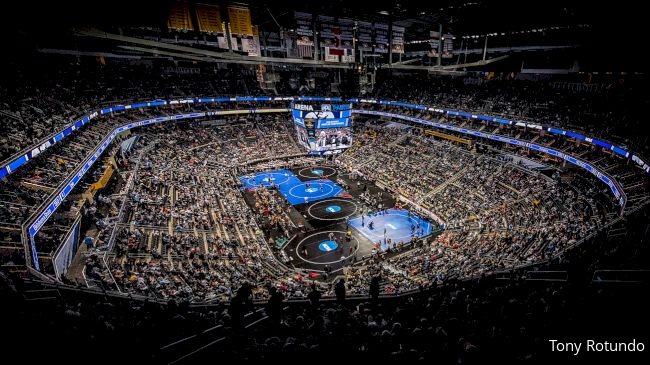How Many Weight Classes in High School Wrestling: An In-Depth Guide
High school wrestling features 14 weight classes. These divisions ensure fair and competitive matches.
Wrestling in high school is a dynamic sport that demands both physical prowess and mental toughness. It’s a test of strength, agility, and strategy, tailored to teenagers at various stages of growth and development. The classification into 14 distinct weight categories is designed to promote fairness, allowing competitors to face off against others of similar size and weight.
This system not only enhances the safety of the athletes but also boosts their confidence, knowing they’re competing on a level playing field. The sport’s inclusive approach encourages participation from a wide range of students, making it a popular choice in high schools across the nation. With its blend of individual challenge and team spirit, high school wrestling remains a cornerstone of youth athletics, fostering discipline, respect, and perseverance among its participants.
Introduction To High School Wrestling
Dive into the competitive world of high school wrestling, which features a range of weight classes to ensure fair and balanced matches. Wrestlers must navigate through 14 distinct weight categories, each presenting its own set of challenges and opportunities for young athletes.
High school wrestling stands as a cornerstone in American sports. Young athletes grapple with not just their opponents, but with discipline, technique, and the scales. Weight classes play a pivotal role in ensuring fair and competitive matches, making the sport both challenging and inclusive.
The Role Of Weight Classes
Weight classes in wrestling create a level playing field. They prevent mismatches between significantly different body sizes. Wrestlers compete against others of similar weight, making bouts safer and more competitive.
Weight management becomes a key skill for wrestlers. They must balance diet and training to qualify for their weight class. This skill is crucial for success on the mat.
High School Wrestling: A Brief Overview
High school wrestling involves intense training and discipline. Students learn various techniques and skills. These skills help them to outmaneuver their opponents. A typical high school wrestling match consists of three periods with various ways to score points.
- Takedowns
- Escapes
- Reversals
- Near falls
Matches can end early if a wrestler secures a pin. This shows complete control over the opponent. Wrestlers aim for the highest honor in high school wrestling – the state championship.

Credit: www.idahosports.com
The Importance Of Weight Classes
The Importance of Weight Classes in high school wrestling cannot be overstated. These divisions ensure matches are fair and safe. They also maintain a level playing field. This is crucial for the integrity of the sport.
Safety And Fairness
Weight classes play a vital role in protecting wrestlers. Without them, bigger opponents could cause harm. This system prevents mismatches in size and strength. It ensures athletes compete against others of similar weight. Safety is the top priority.
Competitive Balance
Competitive balance is crucial in wrestling. Weight classes provide this balance. They ensure no wrestler has an unfair advantage. This encourages skill development. Wrestlers focus on technique, not just size. Every athlete gets a fair shot at victory.
Understanding these classes is key for any wrestler or fan. They define the sport’s framework. Let’s delve into the details.
Determining Weight Classes In High School
Understanding weight classes in high school wrestling is key. It ensures safety and fairness. Wrestlers compete against opponents of similar weight.
Official Guidelines
The National Federation of State High School Associations (NFHS) sets the rules. They determine the number of weight classes. Each state may adjust these classes slightly. Wrestlers must know their state’s specific guidelines.
Weigh-in Procedures
Weigh-ins are crucial for every match. They ensure each wrestler is in the correct class. Wrestlers must weigh in wearing minimal clothing. This happens hours before the competition. The process is strict to maintain fairness.
List Of High School Wrestling Weight Classes
High school wrestling inspires athletes across the nation. Each match holds excitement and skill. Wrestlers compete in specific weight classes. This ensures fairness and safety. Let’s dive into the list of high school wrestling weight classes. Each division caters to a range of body weights. Wrestlers aim for success in their respective categories.
Lightweight Division
Young wrestlers with less body mass start here. The lightweight division tests speed and agility. It includes several classes:
- 106 pounds: The starting point for high school wrestlers
- 113 pounds: A step up, requiring more technique
- 120 pounds: Wrestlers gain more power
- 126 pounds: Skill and speed are key here
- 132 pounds: The end of the lightweight range
Middleweight Division
This division bridges the gap. Wrestlers in the middleweight division show balance. They combine strength with agility. The classes are:
- 138 pounds: The start of increased strength
- 145 pounds: Wrestlers refine their techniques
- 152 pounds: Athletes display endurance
- 160 pounds: A popular class with varied skill sets
- 170 pounds: Wrestlers at this weight are formidable
Heavyweight Division
In the heavyweight division, size and strength dominate. Wrestlers here showcase immense power. The weight classes include:
| Weight Class | Description |
|---|---|
| 182 pounds | Power and leverage become vital |
| 195 pounds | Technique meets strength |
| 220 pounds | Close to the pinnacle of high school wrestling |
| 285 pounds | The ultimate class for high school heavyweights |
How Wrestlers Choose Their Weight Class
Wrestlers face a crucial choice in high school competition: selecting a weight class. This decision shapes their athletic journey and success on the mat. Wrestlers must weigh various factors to find the right fit.
Strategies And Considerations
Wrestlers consider several strategies when choosing a weight class:
- Performance history: Past wins guide future choices.
- Team needs: Coaches may suggest specific classes.
- Competition: Some classes may be less challenging.
- Personal goals: Wrestlers aim for growth and titles.
Considerations also include:
| Factor | Impact |
|---|---|
| Body type | Natural weight influences class choice. |
| Growth potential | Young wrestlers expect weight changes. |
| Strength levels | Physical power steers decision-making. |
Health And Nutrition
Health and nutrition are vital for wrestlers:
- Safe weight management: Healthy methods are a must.
- Balanced diet: Proper nutrition fuels performance.
- Hydration: Water intake is crucial for athletes.
Wrestlers work with dietitians for best results. They avoid rapid weight loss. Steady, healthy plans support peak condition.

Credit: www.facebook.com
Training And Preparation For Different Weight Classes
Wrestlers in high school face a unique challenge. They must prepare for various weight classes. Training and preparation differ for each class. This section will explore effective strategies.
Workout Routines
Success in wrestling depends on specific workout routines. These routines build strength, agility, and endurance. Wrestlers must focus on exercises that mimic match situations.
- Lightweight wrestlers benefit from cardio and flexibility training.
- Middleweight wrestlers need a balance of strength and agility drills.
- Heavyweight wrestlers should focus on power and explosive movement training.
Custom routines help wrestlers excel in their respective classes.
Diet And Weight Management
Wrestlers must watch their diet closely. Proper nutrition fuels the body for training and competition. Managing weight is crucial for staying within a class limit.
| Class | Diet Focus |
|---|---|
| Lightweight | High protein, low fat |
| Middleweight | Lean meats, complex carbs |
| Heavyweight | Calorie-dense, nutritious meals |
Eating right helps wrestlers stay strong and competitive. Wrestlers must also learn safe ways to cut or gain weight.
The Impact Of Weight Classes On Matches
The impact of weight classes on high school wrestling matches is significant. Wrestlers compete against opponents of similar weight, ensuring fair and balanced contests. This system influences various aspects of the sport, including strategies and mental preparation.
Tactics And Techniques
Weight classes shape the tactics and techniques wrestlers use. Lighter classes often see faster, more agile movements. Heavier divisions might focus on strength and control. Coaches tailor training to these weight-specific strategies:
- Speed drills for lighter wrestlers
- Strength training for heavier competitors
- Technique refinement for all weight categories
Diverse skills are essential across all classes. Wrestlers learn to adapt to their weight division’s unique demands.
Psychological Aspects
Weight classes also affect wrestlers’ psychological preparation. The pressure to maintain a certain weight can be intense. Wrestlers must balance this with maintaining energy and focus for matches. Confidence plays a key role:
- Understanding weight management
- Building mental resilience
- Staying focused on match day
Wrestlers develop mental toughness to face opponents with similar physical attributes. This mental game is as important as physical prowess.

Credit: www.ca-usaw.org
Frequently Asked Questions
How Many Divisions In High School Wrestling?
High school wrestling typically features 14 weight classes, ranging from the lightest at 106 pounds to the heaviest at 285 pounds.
What’s The Lightest Weight Class In Wrestling?
The lightest weight class in high school wrestling is the 106-pound division.
Are Wrestling Weight Classes The Same Nationwide?
Yes, the National Federation of State High School Associations (NFHS) standardizes weight classes across the US.
How Do Wrestlers Qualify For Weight Classes?
Wrestlers must pass a hydration test and a body fat assessment to qualify for a specific weight class.
Can Wrestlers Change Weight Classes?
Wrestlers can change weight classes, but they must meet the required weight and follow regulations for safe weight loss or gain.
Conclusion
Wrapping up, high school wrestling offers a diverse range of weight classes. These ensure fair and competitive matches for young athletes. Understanding these categories is key for wrestlers and fans alike. Stay informed and support the dedication of these high school sports stars.
Keep grappling for success both on and off the mat!






